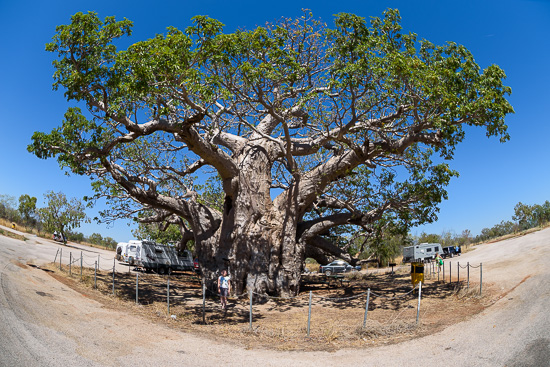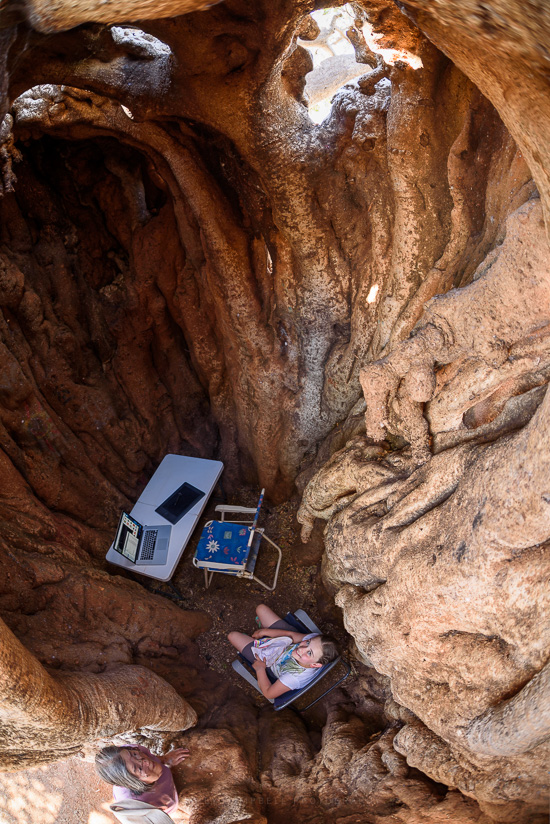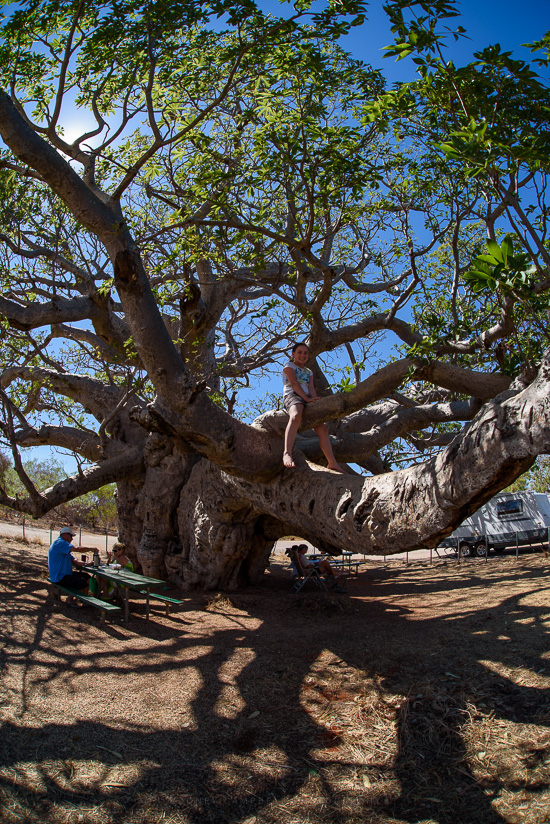The Boab Rest Area…
by Rodney Campbell on Oct.20, 2015, under Life, Photography
We were still travelling west towards the western coast and the seaside town of Derby. Located 156km NW of Fitzroy Crossing it is just off the highway around a very very large boab tree. We arrived early at the Boab Rest Area which allowed us to get a good spot in the shade next to the tree.
Boab Rest Area
The Boab Rest Area lives up to it’s name with this magnificent enormous specimen, they say it is perhaps 1500 to 2000 years old. Although you see Boab trees all along the route that we had driven so far, some very large in dimension, this specimen was of gigantic proportions and perhaps the largest we saw up close.
Note: These images (especially the wider shots) look much better when larger – so click any of the images below to see larger versions in an inline overlay slideshow gallery viewer.
It was so big that it had a “room” inside the trunk which was large enough to setup a table and some chairs inside. This is the view looking down from a small hole in the “ceiling” above with the fisheye lens.
Boab Room
My daughter and I setup inside where it was cooler to escape the heat outside. We spent the next few hours editing photos on my laptop inside this Boab room :).
The Australian Boab tree (Adansonia gregorii) is in the family Malvaceae. It is related to the Madagascan and African Adansonia species known as Baobabs. Sometimes called a “bottle tree”, in Australia they are usually referred to as just Boabs. The name “bottle tree” relates to the swollen trunk that can reach a massive girth of up to 20 metres, about as big as this one was.
Endemic to Australia, Boabs occur in the Kimberley region of Western Australia and east into the Northern Territory.
The trees are deciduous, dropping all their leaves during the dry season. Since the dry season is also the main tourist season, most travellers only get to see the grey brown skeletons. Many of the boabs we had seen so far were like this – no leaves – but this one was still covered in leaves which gave it a very different look and feel.









